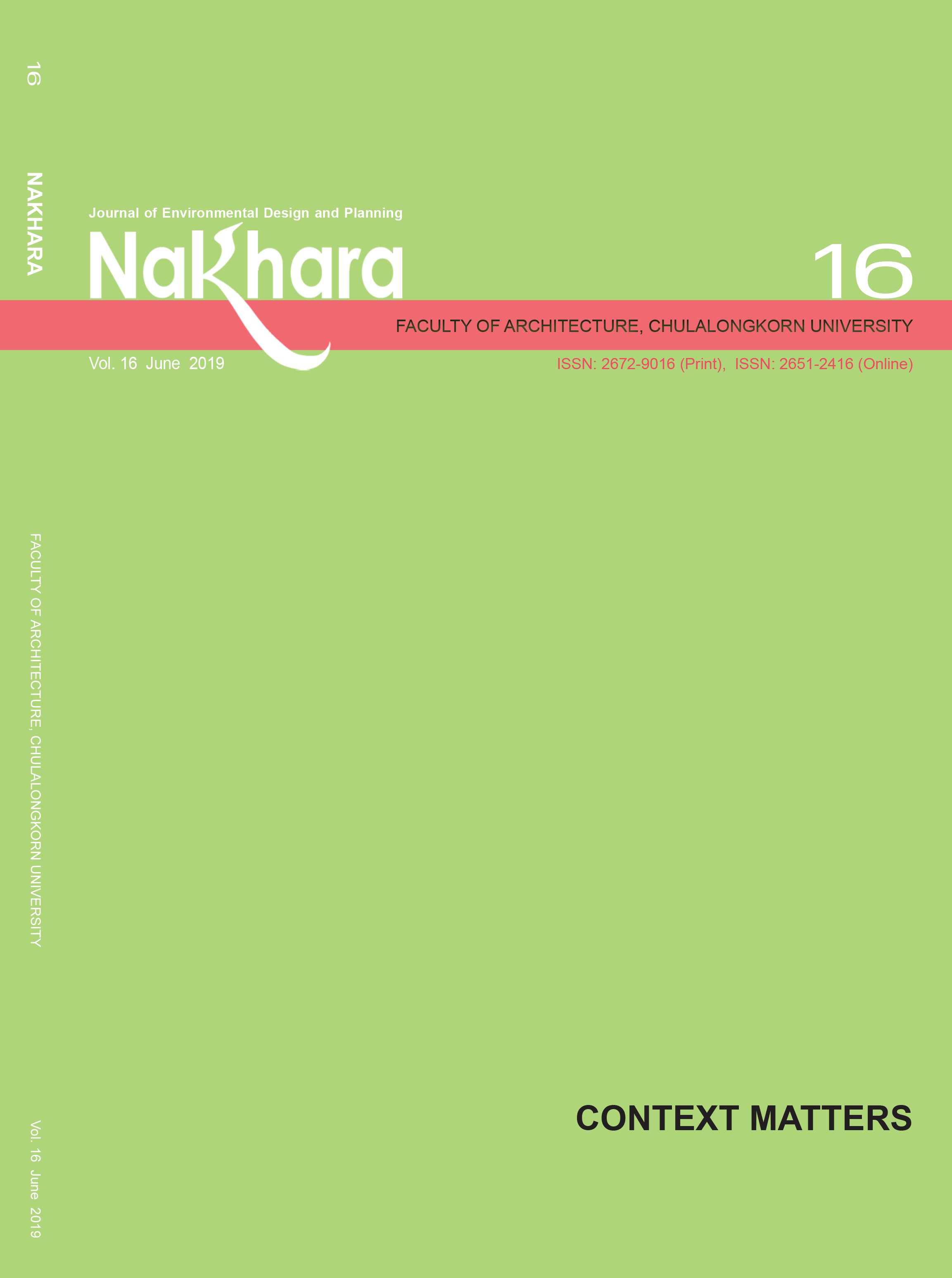Transformation of Housing in Low-income Settlement: A Study of Domestic Spaces in Ershad Nagar Resettlement Camp
Main Article Content
Abstract
Housing transformation is a major livelihood strategy among low-income households in formal and informal settlements. Domestic spaces are produced for social unit. This study illustrates the analysis of domestic spaces in a low-income settlement and their impact on the way of life of the inhabitants. The factors that affect the physical organization of spaces and its quality are evaluated with respect to the survival strategy of the low-income dwellers. The space organization of the dwelling units in low-income settlements illustrates different structures and forms that may not fit the conventional understanding of modern urban housing. The space organization of such dwelling reflects the users need and space requirements and the incremental developments are experienced with mutual understanding of the neighbors. In this respect, the physical characteristics a low-income settlement in Dhaka are investigated; namely Ershad Nagar resettlement camp. Besides the housing and neighborhood characteristics, the economic, social and cultural status of people living in those areas is examined. The study shows that for some reasons the domestic spaces of the low-income housing are being transformed in course of time since their establishment. And the transformation of domestic spaces reflects the overall housing transformation of the settlement.
Article Details

This work is licensed under a Creative Commons Attribution-NonCommercial-NoDerivatives 4.0 International License.
References
Kinyungu, A.N. (2004). Public-sector partnerships in the servicing of land and provision of housing for low-income groups in Harare: Experiences and lessons learnt 1990-1996. n.p.: RICS Foundation.
Tipple, A.G. (2005). The place of home-based enterprises in the informal sector: Evidence from Cochabamba, New Delhi, Surabaya and Pretoria. Urban Studies, 42(4), 611-632.
Avi, F. (2002). The adaptable house: Designing homes for change. New York: Mcgraw-Hill.
Habraken, N.J. (1975). Supports: An alternative to mass housing. London: Architectural press.
Tipple, A.G. & Ameen, A.S. (1999). User initiated extension activity in Bangladesh: Building slums or area improvement. Environment and Urbanization, 11(1), 367-376.
Rahman, M . (1999, September 24). Squatters and housing rights.The Daily Star, p.3.
Kümbetoğlu, B. (1992). Women’s informal sector contribution to survival of their household in urban Turkey (Unpublished Ph.D. Thesis). Marmara University, Sos. Bil. Enst, Istanbul.
Mahmud, S. (2001). the Interaction between physical space and way of life in low-income settlements: Case of bustees and resettlement camps in Dhaka (PhD Thesis). Bilkent University.
Ghosh, A. (1994). The use of domestic space for income generationin a low-income housing settlement -case study in calcutta, india. n.p.
Mahmud, S. (2003). Women and the transformation of 45 domestic spaces for income 46 generation in Dhaka bustees. n.p.
Barua, U, Azad, S U, Rajia, S., & Islam, I. (2014). A conceptual proposal for low-income housing in bangladesh: an alternate to slum. n.p.
Alexander, C., et al. (1977). A pattern language: towns, buildings, construction. New York: Oxford University Press,.
Rashid, M. (2017). The continuous process and purposes of the transformation of rural settlements in Bangladesh. International Journal of Architecture, Engineering and Construction, 6(3), 35-43.
Islam, T., & Adnan, E. R. (2016). Home within slum: An architectural analysis of domestic and community living in Ershadnagar resettlement camp, In Bangladesh Planning Research Conference (BPRC).

